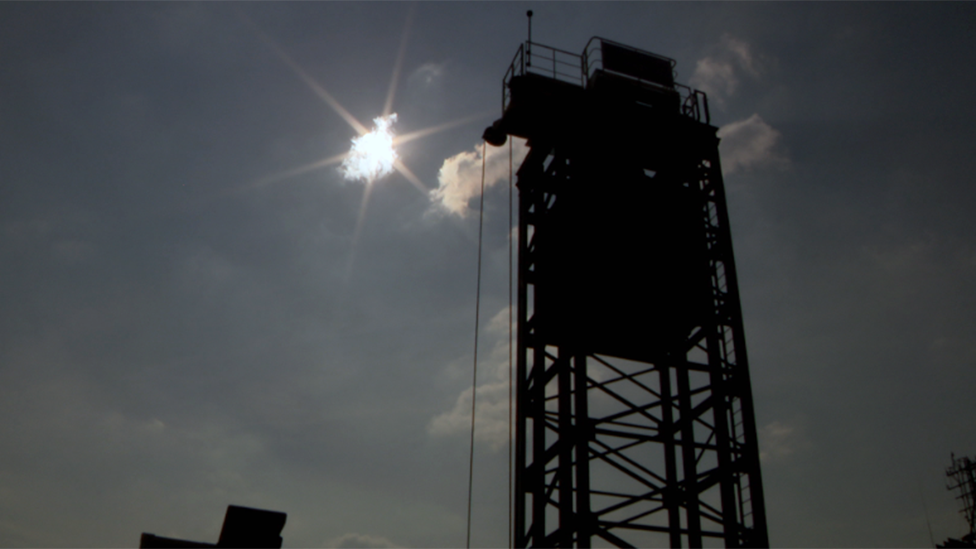Gravitricity battery generates first power at Edinburgh site
- Published
- comments
'Gravity battery' generates power for first time in Edinburgh
A project to create electricity from gravity has generated its first power at a demonstrator site in Edinburgh.
The Gravitricity system acts like a giant battery to balance the electricity coming from renewables.
Experts say such storage systems will be increasingly important as our reliance on wind and solar energy grows.
The company behind the technology hopes to roll it out across Europe and Africa.
The 15m (49ft) high demonstrator - costing £1m - is housed in a tower on the quayside at Leith docks.
The system works by using excess power to raise heavy weights which keep that energy "stored" until it is needed. Electricity is generated when the weights are dropped.
The two weights operate for little more than 10 seconds but it has been built to prove that the technology works.
Gravitricity managing director Charlie Blair told BBC Scotland: "This is not helping keep the lights of Scotland on, although it is grid-connected.
"If this technology is one that really makes a difference it's going to make a difference globally. It's going to keep the lights on in Africa, as they build the grid, just as much as it will in Europe."

Power is effectively stored in the heavy weights until it is needed
It has been designed to be housed in old mine shafts rather than towers and in the UK could go to depths of 750m (2,461ft) - twice the height of the Eiffel Tower in Paris.
But in African countries, where it could be placed in holes specifically built for the job, the depth could exceed 2km (1.2 miles).
Energy expert Hannah Chalmers, from the University of Edinburgh, said: "Energy storage technologies are quite new for our electricity system. We've not needed them so much in the past because conventional power plants have tended to come with storage in-built.
"But for wind farms and things like that, the storage doesn't come naturally so it's really helpful to have other systems that are able to provide storage."